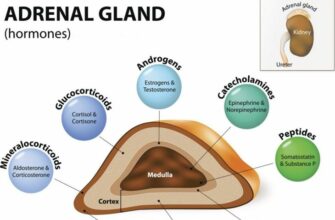Cluster feeding occurs when a baby suddenly changes their normal feeding behavior and begins to eat more frequently. Sometimes, each cluster feeding is shorter than a regular feeding, but often, it is not. Cluster feeding is normal. It is most common in breastfeeding newborns, though it can happen with bottle-fed infants, too.
Identifying Cluster Feeding
Cluster feeding is described as feeding sessions that are shorter and more frequent, occurring over a period of three to four hours, though it may occur as several short feedings close together during the baby’s fussiest time of day. Identifying cluster feeding is generally easy because it is a change from a baby’s normal feeding pattern.
Growth Spurts
A common cause of cluster feeding is a growth spurt. Infants have frequent growth spurts, often around two or three weeks, six weeks, and then again at three and six months. Babies are often fussier and want to eat more often during a growth spurt, not only because they require more energy but also to stimulate the breasts to increase the body’s milk supply.
Evening Feeding
Babies often cluster feed at night. Infants can be fussier in the evening because they are tired from the day and enjoy the comfort of nursing. Another reason for cluster feeding in the evening is that they may want to fill up their stomachs before sleeping for longer stretches at night.
Teething and Development
Teething can also cause a baby to cluster feed. Teething is uncomfortable and causes the baby’s jaw and gums to ache. Breastfeeding releases endorphins that help the baby relax and decrease pain. Other developmental factors can contribute to cluster feeding, too. For example, if a baby is nearing six months old and begins cluster feeding, it is a sign that they are ready to begin solids.
Breast vs. Bottle
Cluster feeding occurs with both breastfed and bottle-fed babies. Sometimes, babies snack during cluster feeding and do not take a large volume, or they may want to suckle for comfort. The only difference between cluster feeding in breast and bottle-fed babies is that it is easier to determine how much the baby is eating when they are bottle-fed.
How To Determine Whether a Baby is Eating Enough
It is easy to worry that a baby is not getting enough milk and assume that is what led to cluster feeding. There are ways to determine whether an infant is getting enough milk or formula. If the baby has enough wet diapers during the day and is gaining weight appropriately, it is safe to assume that they are getting enough to eat.
Signs That Cluster Feeding is Normal
Cluster feeding is normal after the mother’s milk supply has come in, and she is producing enough for the baby to gain weight and have frequent wet diapers and stools. It is also normal when it is limited to between three and four hours a day and not with every feed.
Signs That Cluster Feeding is Not Normal
There are some situations in which cluster feeding is not normal. A parent who notices their baby is jaundiced, lethargic, has tremors, feeds non-stop, or continues to act hungry after eating should contact the pediatrician. Infants who lost more than four percent of their body weight in the first 24 hours of life or seven percent at any other time are most likely not getting adequate nutrition and should be screened for health issues.
Breast Milk Production
If breastfeeding infants do not get enough to eat, it could be a problem with supply. While it is common for the breasts to stop becoming engorged after the first month or so, they are still producing breast milk. The best way to produce more is to continue to breastfeed — the baby’s suckling stimulates the body to make more milk. Speaking to a lactation consultant can also help mothers increase their supply.
When to Call the Doctor
There are times when it is necessary to call the doctor if breast milk production stalls. If five days go by and the breasts do not feel full, or if no milk drips from the breasts when it is time for a feed, the supply is likely inadequate. Either the breasts are not producing enough, or the baby is not suckling well enough to stimulate production.

 Home
Home Health
Health Diet & Nutrition
Diet & Nutrition Living Well
Living Well More
More




















